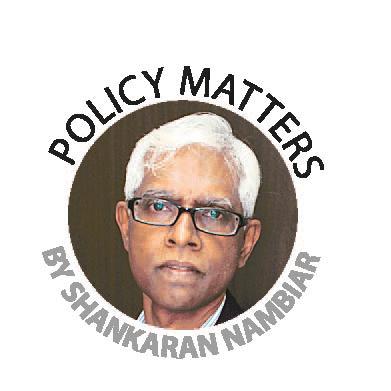WITH the Covid-19 flare-up, the usefulness of monetary policy comes into question. The volatility of financial markets, as measured by the CBOE Volatility Index, has spiked in 2020 to levels comparable to the 2008 global crisis.
The US Federal Reserve (Fed) has pledged close to 20% of the gross domestic product (GDP) in funding for credit and market supporting facilities.
Furthermore, central banks in the Group of Seven industrialised nations purchased US$1.4 trillion worth of financial assets in March alone, suggesting that monetary policy has a crucial role to play in dampening the effects of the Covid-19 crisis.
Monetary policy can spread the risk of recession, reduce financial system risk and limit the fall in nominal GDP.
It can also offset, though imperfectly, spending shortfalls and provide some reassurance that current cash flow problems are temporary.
But monetary policy does have its limitations.
It cannot eliminate the disruptions to production and employment, neither can it target specific geographic regions or segments of the population.
Prior to the 2008 global crisis, macroeconomic thinking generally held that financial markets reflected economic activity, but do not have an impact on the business cycle.
More recent research shows that the price of risk assets, be it housing, households, or credit, can directly and substantially affect aggregate demand.
What happens when there is a large negative supply shock?
Risky assets such as credit, housing and stocks take a beating.
This will lead to banks incurring losses and increases in leverage.
Consequently, there is a decrease in risk tolerance and downward pressure on aggregate demand.
Thus, “r-star” comes down.
Therefore, a cut in the interest rate that is consistent with a lower “r-star” is called for.
This is where the central bank comes in.
The Fed and the European Central Bank (ECB) have opted for near-zero interest rates.
The Fed has cut its target for the federal funds rate since early March and it has offered forward guidance that the rates will remain low, putting downward pressure on longer-term rates.
That aside, the Fed has been supporting the financial market.
One striking example is the size of repo being offered.
Before Covid-19, the Fed was offering US$100 billion in overnight repo and US$20 billion in two-week repo.
Not too long ago, it was offering US$1 trillion in daily overnight repo and US$500 billion in three-month repo.
Other measures taken by the Fed have included encouraging banks to lend, supporting corporations and supporting loans to small and mid-sized business.
The Fed has been supporting corporations by lending directly to them; by buying new bond issuances; and by providing loans. But it is not clear if the United States has been doing enough.
Fingers have been pointed at stocks that are tanking and credit markets that are seizing up.
The ECB has been doing about the same as the US.
It has been trying to keep borrowing affordable by maintaining key interest rate unchanged in its March to July meetings.
The ECB has gone in for asset purchase programmes and long-term refinancing operations.
Like the US, the ECB has been supporting access to credit for firms and households.
It is too soon for the jury to deliver a verdict on the success of the ECB.
Closer to home, Bank Negara Malaysia (BNM) has been extending measures that it would normally be aghast to commit itself to.
It has cut interest rates in consecutive monetary policy committee meetings, something that the conservative central bank does not normally indulge in.
BNM also offered a six-month moratorium on loans/financing repayments (starting from April 1) to ease the burden on households and companies.
For the remaining period from October till the end of the year, while there is no blanket moratorium.
Individuals can apply for a deferment in the payment of loans, it will be up to the discretion of banks to accept or reject such applications.
In that sense, the moratorium will be targeted, serving only those who need support.
There is a tremendous amount that BNM has done in terms of extending funds to help SMEs.
This has included the all economic sectors facility, collateral-free financing for micro enterprises, financing for the agriculture sector to increase food production and export, and the SME automation and digitalisation facility.
The challenge is not over.
If anything, there is a possibility of a resurgence with the number of Covid-19 cases increasing.
The economy could come to a screeching slowdown with firms in the travel, leisure, hospitality and property sectors showing bad balance sheets and contributing to job losses. The status of government-linked companies could also be a cause of concern.
With corporate profits sinking and unemployment levels rising, a daunting set of challenges could crop up.
All is not lost.
Budget 2021 could come up with refreshing ideas and a burst of support for an ailing economy.
The much-awaited 12th Malaysia Plan could also be a harbinger of hope, driving expectations upwards.
Dr Shankaran Nambiar is head of research at the Malaysian Institute of Economic Research and a visiting fellow at the Crawford School of Public Policy, Australian National University. He is author of “Malaysia: At the Edge of Transformation”. The views expressed in this article are his own.














